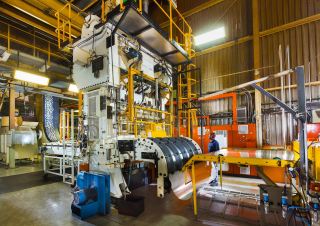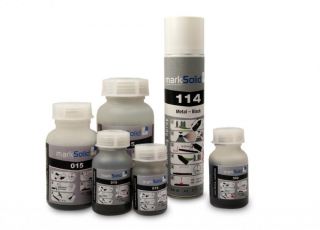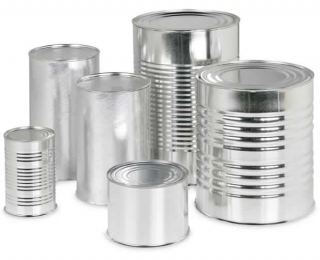Converting from Steel to Aluminium Beverage Cans Bears Fruit for SA's Metals Pacakging and Recycling Industries
More than $94-million (ZAR1.258 billion) in capital investments have been made by industry heavyweights such as ABInbev, Coca-Cola Southern Africa, Nampak Bevcan and Hulamin to convert the beverage can industry from steel to aluminium.
Not only did this step bring the region in line with other major markets such as the United States - which changed to aluminium cans in the 1970s and 1980s – but it also had a major, positive impact on the industry’s recycling statistics.
According to MetPac-SA, the industry body representing the interests of the local metal packaging industry, the recycling rate for used beverage cans in South Africa grew significantly from only 18 % in 1993 to its present rate of around 72%. The organisation’s CEO, Delanie Bezuidenhout, believes that South Africa’s conversion to aluminium played an important role in increasing recycling volumes because aluminium beverage cans are infinitely recyclable without loss of strength or quality, and offer collectors an attractive rate.
“This makes aluminium recovery and recycling an economically-viable option for beverage can collectors in the informal sector. Millions of Rands flows into the scrap metals and recycling industry each year, allowing an additional 2 000 to 3 000 people to earn a living or to supplement low incomes,” Bezuidenhout says.
With a long tradition of continuous improvement and business excellence, Nampak Bevcan has become a preferred beverage can manufacturer in sub-Saharan Africa. With manufacturing plants located in Johannesburg, Pretoria, Cape Town, Angola and Nigeria, Nampak Bevcan commissioned South Africa’s first aluminium beverage can production line at its Springs plant. By end-2014, all of their Gauteng can production lines were being converted to aluminium cans, completing the transition from steel to aluminium cans in just a few years. Initially only two aluminium lines were running, but soon all three lines were operational to meet the demand – allowing the company to produce eight can sizes at maximum speeds of up to 3 000 cans/minute, compared to 1 600 cans/minute on the old tinplate lines.
“The full-scale plant is regarded as one of the biggest aluminium can manufacturing facilities in the world”, says Erik Smuts, Nampak's Group Executive for Bevcan.
Smuts lists the environmental advantages of this conversion process as up to 17% less energy is used in the manufacturing process because, amongst other savings, no external white coating is required, which in turn has reduced the number of ovens needed.
“A melting point of 660°C compared to more than 1 300°C for steel to process and recycle aluminium plus around a 60% weight reduction, which helps to minimise material and transportation costs, results in a significantly improved carbon footprint,” he states. “Thanks to system advances, we’re are also achieving significantly enhanced print quality on aluminium cans at high speeds.”
Hulamin is the sole South African company capable of manufacturing the aluminium sheet that Nampak requires. In past years, almost 95% of Hulamin’s aluminium came in the form of virgin aluminium ingots from BHP Billiton’s Hillside smelter in Richards Bay, KwaZulu-Natal. However, because it takes about 20 times more energy to convert mined bauxite into aluminium than it does to re-melt a used beverage can, Hulamin invested heavily in its recycling operations to take advantage of this energy and production cost savings.
Hulamin recently unveiled a ZAR300-million state-of-the-art, scrap recycling facility built to recycle used aluminium cans – including scrap storage, sorting, cleaning and melting – increasing Hulamin’s onsite closed-loop recycling capability. The company is on its way to sourcing 20% of metal units from recycling.
“Looking at the Brazilian market, which leads global can recycling with a recovery rate of 97.9%, we believe that South Africa can achieve the same successes. In Brazil, no cans go to landfill and the collectors are the most important pillar for this process. To this end, we are working hard on aligning industry roleplayers with our vision to ensure that collectors benefit from an efficient and transparent market. We want to streamline the recycling of aluminium cans in order to ensure that more of the metal’s value will be passed through to collectors. It’s in all of our interests to have as high a recycling rate as possible,” Delanie concludes.
To find out more about MetPac-SA’s objectives and operations, visit www.metpacsa.org.za
Issued on behalf of Metpac-SA by Aim Marketing & Communications Consultants.
For more information, contact Monique Holtzhausen at (021) 531-0313 or (071) 083-5219.
Email: This email address is being protected from spambots. You need JavaScript enabled to view it.
Permanent, black markings on metals with CO2 laser
Trotec has recently added markSolid marking spray and pastes to its product range, making it possible to create permanent, black markings that are highly resistant to mechanical and chemical stresses as well as high temperatures.
This product is an essential tool in industrial markets.Without a fibre laser, it is not possible to create an intense, black mark on metals, ceramics or glass. With the help of marking sprays or pastes, this can easily be solved.
Faster engraving speed and higher outputmark
Solid laser marking products allow creating an intense, black marking even at higher production speeds. Marking sprays and pastes are very popular for all applications that require high contrast and durability - making markSolid products ideal for bar coding, product serialization, logos and decorative marking.
The markSolid spray makes application easy, especially for larger areas.
Trotec has a long global history of supplying laser and rotary consumables and we look forward to watching how our increased product portfolio and support capabilities will help expand our customers' businesses and create opportunities for them.
More information on trotec laser systems and engraving supplies can be found on:www.engraving-supplies.co.za
The Mettle of Metal Packaging
The newly formed Producer Responsibility Organisation (PRO) tasked specifically with looking after the interests and recycling of steel, tin plate and aluminium packaging, MetPac-SA, says metal packaging is arguably one of the most reliable and versatile types of packaging used in South Africa and the world today.
Multiple benefits
“Metal packaging comes in a wide range of sizes – from a small can for tomato concentrate, to a steel drum for bulk tomato transport, and everything in-between. Despite holding a relatively small share of the total packaging market, factors such as innovation, new introductions and significant promotional activity are driving the ever-increasing demand for cans,” says Delanie Bezuidenhout, CEO of MetPac-SA.
Bezuidenhout advocates that metal and aluminium cans are becoming increasingly popular as a packaging option, owing to the multitude of sizes, shapes and printing designs can be manufactured to individual customer requirements. “Innovation sells packaging and packaging sells products. The lightness of aluminium packaging helps to save resources during filling, product transportation, storage and the transportation of scrap at the end of a product’s life. Thanks to its unique attributes, cans act as food warehouses that have unrivalled shelf lives. They are able to protect their contents over many months, with no refrigeration, and therefore helps to save food, energy and prevent wastage. Furthermore, metal and aluminium cans are unbreakable, impact-resistant and puncture-resistant and able to withstand extreme temperatures and pressure,” she says.
Growing market share
“Although the market share for metal packaging has traditionally been relatively small (216.8 tonnes of 3 490.1 tonnes, according to the latest stats available to Packaging SA) we believe it is poised for growth as South Africans are increasingly choosing cans as the packaging material of choice when it comes to both their drinking, food and general packaging preferences. Beverage cans today are among the lightest beverage packages, while at the same time being extremely robust and protective of their contents. Today, cans can be produced with a wall thickness of 0.097 mm – as thin as a human hair”, she says.
Safety throughout the supply chain
Metal or aluminium cans offer brand owners a proven safety and sustainability record and excellent performance through the supply chain. Because metal cans are designed to meet the demands of our modern lifestyles, they are unbreakable and reduces the risk of leaking or tearing during transportation. “The lightness of aluminium packaging helps to save resources during filling, product transportation, storage and the transportation of scrap at the end of a product’s life. The weight of aluminium cans has been dramatically reduced over the years thanks to technological innovations. Sixty years ago, the first beverage can weighed more than 80 grams. Today a 330 ml aluminium can only weighs about 13 grams – helping us reduce our carbon footprint from manufacturing through to the supply chain, transportation and recycling process (cradle to cradle),” Bezuidenhout says.
Recycling of cans
Metal cans and packaging have high recycling value and are one of the most recycled packaging materials worldwide. 74 % of metal packaging is recycled in Europe, and an estimated 72 % for beverage cans in South Africa – ranking us amongst the best in the world in used beverage can recovery.
“Metals are natural elements that maintain their physical properties forever. When metal products reach the end of their useful life, the materials are simply collected and recycled, again and again, with no loss of their inherent properties. In other words, once metal enters the material-to-material loop, in which it is recycled again and again, it will always be available for future generations,” Bezuidenhout explains.
Conclusion
“The lightness of aluminium packaging helps to save resources during filling, product transportation, storage and the transportation of scrap at the end of a product’s life. Metal offers premium packaging solutions that are able to meet a wide range of market needs, and are proven to be safe and convenient. MetPac-SA is excited to promote the versatility of metals through an ongoing marketing campaign, increase the market share of the industry and protect the interest of its members through stakeholder involvement. We will actively be encouraging more role players to become members in to ensure the local metals packaging industry has a strong voice when matters that directly impact its present and future business interests, are raised”.
For more information on MetPac-SA, email This email address is being protected from spambots. You need JavaScript enabled to view it.




